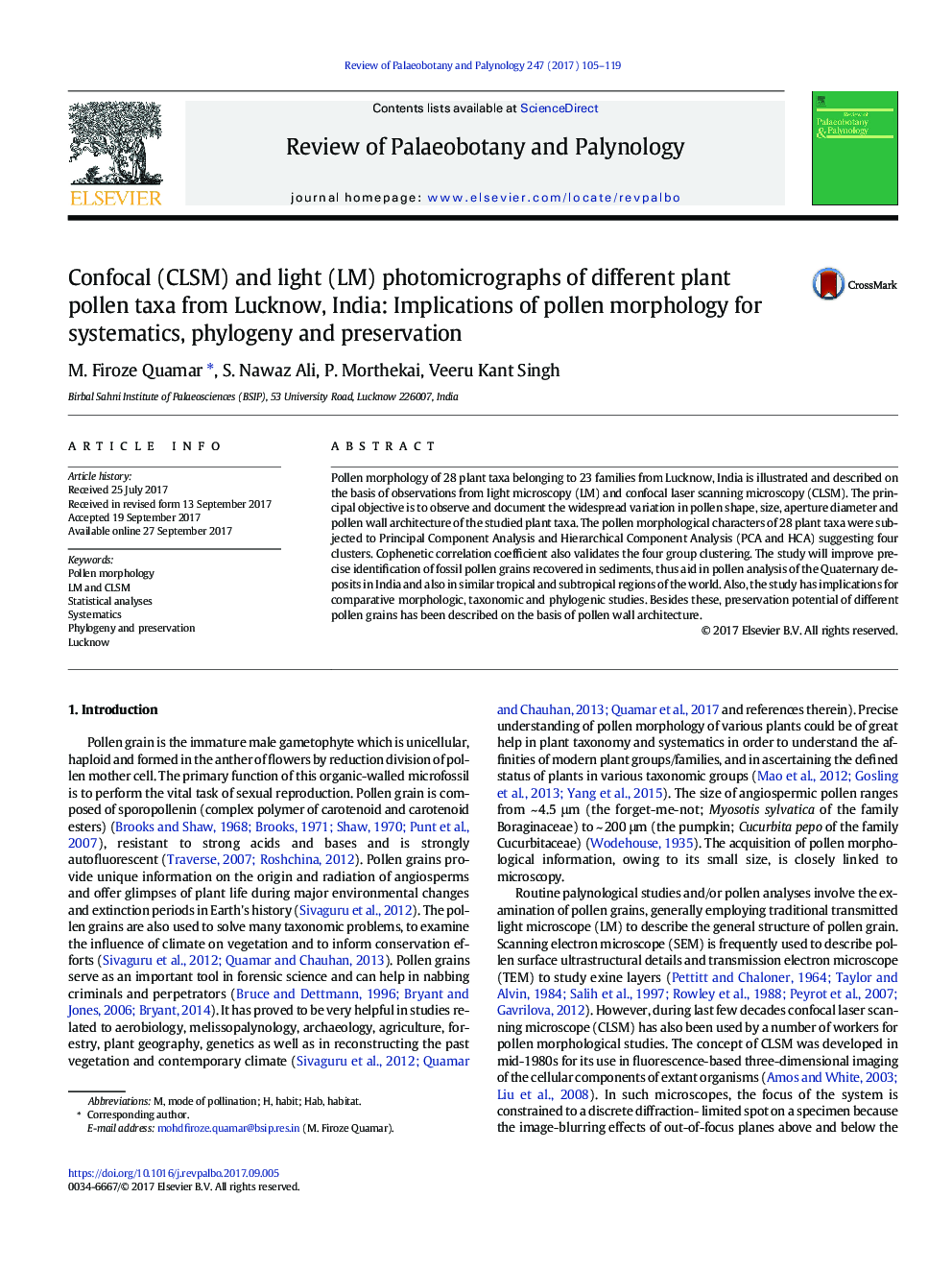| Article ID | Journal | Published Year | Pages | File Type |
|---|---|---|---|---|
| 5788298 | Review of Palaeobotany and Palynology | 2017 | 15 Pages |
Abstract
Pollen morphology of 28 plant taxa belonging to 23 families from Lucknow, India is illustrated and described on the basis of observations from light microscopy (LM) and confocal laser scanning microscopy (CLSM). The principal objective is to observe and document the widespread variation in pollen shape, size, aperture diameter and pollen wall architecture of the studied plant taxa. The pollen morphological characters of 28 plant taxa were subjected to Principal Component Analysis and Hierarchical Component Analysis (PCA and HCA) suggesting four clusters. Cophenetic correlation coefficient also validates the four group clustering. The study will improve precise identification of fossil pollen grains recovered in sediments, thus aid in pollen analysis of the Quaternary deposits in India and also in similar tropical and subtropical regions of the world. Also, the study has implications for comparative morphologic, taxonomic and phylogenic studies. Besides these, preservation potential of different pollen grains has been described on the basis of pollen wall architecture.
Related Topics
Physical Sciences and Engineering
Earth and Planetary Sciences
Palaeontology
Authors
M. Firoze Quamar, S. Nawaz Ali, P. Morthekai, Veeru Kant Singh,
